Brand storytelling is a vital aspect of any successful marketing strategy. While it’s important to create content to increase traffic, the content must do more than provide customers with information about your products. With endless options out there, customers are looking to give their business to companies that resonate with their experiences, values, and goals.
Trust becomes more important than the products or services you offer.
This is where brand storytelling comes in. Stories trigger a response in our brains and invite us to make connections. Good stories stick with us and drive action.
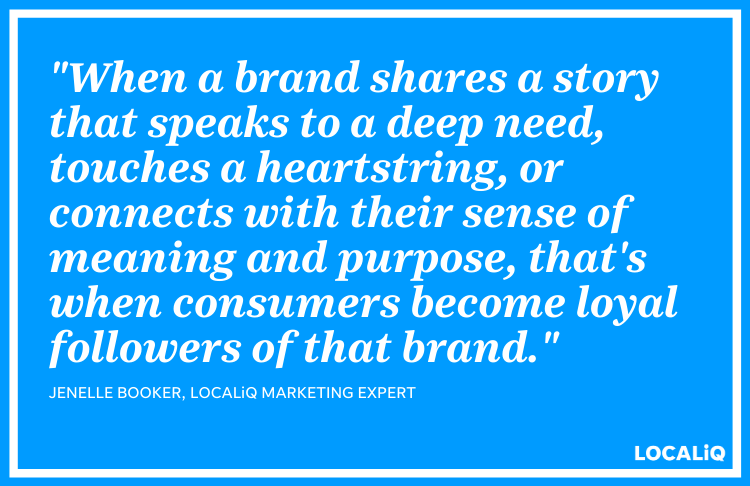
In this post, we’ll explore:
- The difference between a brand statement and a brand story.
- Why you need to share your brand’s story.
- How to create a brand story.
- How to tell your brand story.
What Is a Brand Statement vs. a Brand Story?
A brand statement is a short statement of what your company does and how that solves your customers’ problems. A brand story is the accumulation of every touchpoint between customers and your brand.
A good brand story is a compelling and engaging narrative that puts your customers and their needs at the center. In a brand story, your customer is the main character. When they see themselves as a vital part of the story and your business (and your business as part of their story), you’ve made a genuine connection.
Why You Need to Share Your Brand’s Story
When you share your brand’s story with your customers, you build an emotional connection, establish trust, and encourage them to take action. Brand stories drive brand awareness and conversions by strengthening your relationship with the customer.
Your brand story will help you build an emotional connection with your customers.
People are wired to connect with others through stories. People rarely feel that same emotional drive when confronted with facts, but we are 22 times more likely to remember a fact when it is part of a story. A story can bypass the logical part of the brain and register on an emotional level. This connection is essential as audiences are increasingly able to avoid traditional forms of advertising.
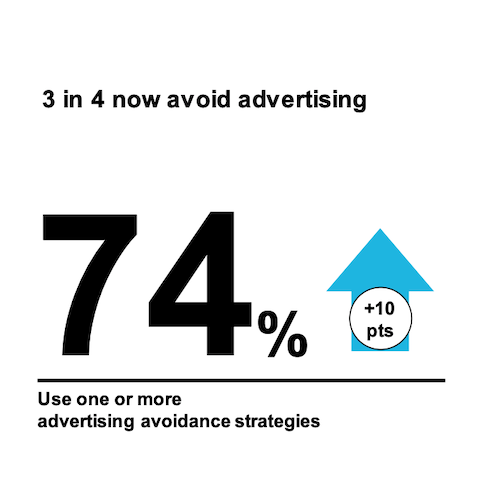
Your brand story helps you establish trust with your customers.
Eighty-one percent of people say that trust is a deciding factor when making a purchase. It is difficult for potential customers to trust a faceless organization. A brand story helps to humanize your brand by demonstrating how your attitudes, beliefs, and values connect with your customers.
A brand story encourages your customers to take action.
Not only will it help attract customers and drive conversions, but the right brand story makes sure you are attracting the right customers, the ones whose values match your own. These people are more likely to stay loyal and advocate for your business. A good brand story changes a customer into a customer for life.
Related: See examples of brands using their story on their about us pages.
How to Build Your Brand Story
Creating your brand story is easier said than done and ties in many facets of your business. Use these five steps to create your brand story.
1. Define Who You Are
Before you turn your brand statement into a brand story, you need to write a brand statement. This is where you define who you are and what you offer. It may help to review your mission statement or write one if you haven’t already. A mission statement is written for the company and its employees; a brand statement is geared towards customers and clients.
A brand statement defines:
- What your company does or the services they sell.
- How your company does it. (This includes the Unique Value Proposition (UVP), or the unique products or services you offer.)
- Why you do what you do. (This is the most important because it connects to your audience on an emotional level.)

The three essential elements for any story are character, conflict, and revelation. By expanding your brand statement to follow the narrative structure, you can create a compelling, engaging, and memorable brand story that invites your prospects and customers to connect with your business.
(It’s also important to create a brand identity. Find out how to do that here!)
Related: Find out how to define your brand purpose.
2. Make Your Story Compelling (Answer the “What?”)
To make your brand story compelling, establish the characters and conflict. This corresponds with the “What?” part of your brand statement.
You are not the main character of your brand story; your customers are. If you need to identify your target audience, create buyer personas. The conflict stems from the problems or pain points your customers are experiencing. Without a conflict, your story would be little more than a sales pitch. By showing you understand your customers’ challenges, you connect with your customers on a human level, rather than remaining a faceless business.
Your customer has likely already identified their problem before they visit your business. You might only need to confirm you can solve it or point out other issues they haven’t considered yet.
A good story always includes specific details. It may seem counterintuitive, but the more specific you are with your story’s details, the more universal the appeal is. Provide educational content, such as ebooks, blogs, or how-to webinars. Use case studies to show challenges your customers faced and how your company helped solve them.
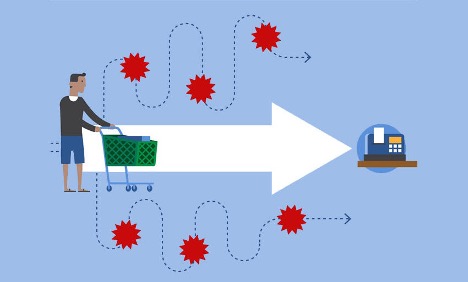
3. Make Your Story Engaging (Answer the “How?”)
To make your story engaging, set up a clear path for your potential customers to interact with your business. This corresponds with the “How?” of your brand statement.
Here you can provide insights and solutions to address these problems and promote your UVP. Your potential customers will see you as an expert who is genuinely concerned with them. This may include a FAQ page, product demonstrations, or informational articles or videos.
4. Make Your Story Memorable (Answer the “Why?”)
As any moviegoer will tell you, the ending is important. A surprising ending can transform a mediocre film into a great one, and a disappointing ending can leave the audience grumbling. The same is true for your brand story.
To make your story memorable, make your audience see things in a new light. This is the revelation of the story and where the “Aha!” moment lives. This corresponds with the “Why?” of your brand statement.
Answering the “Why?” shows how your products or services can address your customers’ needs. Just like in the brand statement, this is the moment you link your story to a larger value or principle that drives both you and your customers. The key is to invite the customer to make an emotional connection with your brand. You want them to think not only about the products you sell but how your products fit into the stories of their lives.
When you cause your customers to rethink something — about your company, your product or services, or even themselves and their needs — the experience is cemented in their minds. Customers link your business with that positive emotion.
Follow with a call to action. This may be to sign up for emails, request more information, or make a purchase.
Let’s take a moment to look at the brand story from my favorite bagel shop, Rosenberg’s:
“In figuring out how to replicate the New York City water that makes their bagels one-of-a-kind, Joshua and his Rosenberg’s family provide you with soft and chewy, right out of the oven bagels, fish smoked and cured in house, delicious salads, high-end coffee, pastries and oh, so much more!”
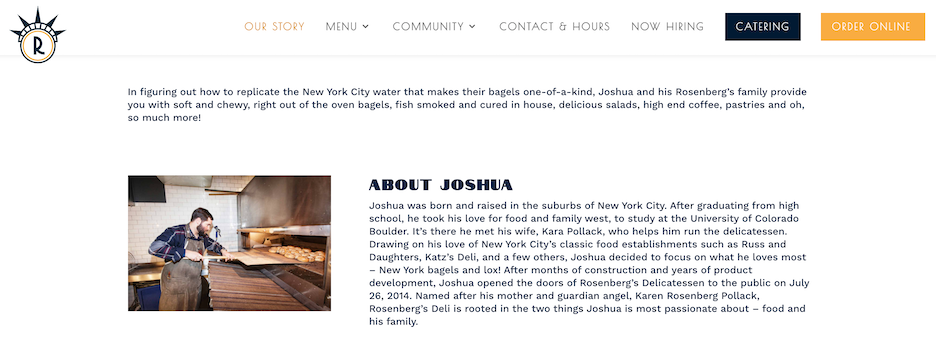
Not only are they solving my problem of wanting a bagel, but they are also addressing a need I didn’t know I had — I couldn’t get an authentic New York bagel in Denver! They do this by tapping into a larger value, tradition. As a customer, I feel I’m getting something both unique (for Denver) and traditional (even if it’s an NYC tradition), which adds to that bagel’s value. And they did this by transforming their About Us page into their brand story.
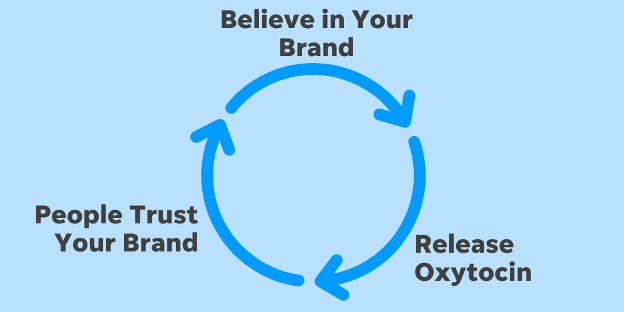
5. Keep Your Story Consistent & Cohesive
Like any good story, a brand story is told again and again. Different elements may live in different types of content. Each piece of content, creative, or touchpoint contributes to a new part of the story. Even more challenging, your customers inform and shape your brand story with every post, comment, or review they publish. There’s no longer only a one-way flow of information from company to consumer.
To keep your brand story intact, write a short brand story from the elements you mapped out in the story arc. This serves as a focal point when creating content to make sure your story stays consistent and cohesive.
How to Keep Your Story Consistent
A brand story needs a consistent tone of voice. This tone should be authentic to you and your company and match your brand personality. If you are unsure of your brand personality, think about the customers you’d like to attract. Since customers are more likely to buy from brands that have personalities similar to their own, you can list the traits you notice in your customers and narrow it down to three to five adjectives.
If your university targets people who want a professional degree, like culinary, you might want to be:
- Entrepreneurial
- Driven
- Efficient
If you target people interested in a STEM degree, maybe you are more:
- Innovative
- Ambitious
- Experienced
When you create content, ask yourself questions like: What would my brand sound like? Is it formal, friendly, funny, or serious?
Use this tone for all your content, though you may need to adjust slightly for different media or audiences. A brand story is not about selling. It is part of a content marketing strategy rather than a sales pitch. Keep your tone authentic and honest to who you are.
How to Keep Your Story Cohesive
Your brand story should be consistent in each piece of content. If you notice the story starts to shift, go back and review your original story to see if it fits where your business is now. It may need retelling.
Read: Why Creating a Cohesive Brand Matters
How to Tell Your Brand Story
While your brand story needs to remain consistent and cohesive, you will need to adjust for different channels and audiences.

1. Tailor Your Brand Story for Each Channel
You don’t want to put the exact same content on your site as you do on your social media platforms. These channels have their own set of customer expectations, so you want to fit your story within those guidelines. This is where you should consider how visuals and video can enhance your brand story.
2. Listen to Your Customers’ Feedback About Your Brand Story
Whenever we tell a story, we run the risk that the audience might see a meaning we didn’t intend. The same is true for a brand story. By listening to the stories your customers tell about your brand, you’ll see if your brand story is resonating with them the way you want. They may tell others about your business, post a review, or engage your business through social media.
3. Evolve Your Brand Story
The message you hear from customers becomes part of your brand story. If they write something that doesn’t fit with your brand story, you need to address and incorporate it. Responding with your authentic voice to your customers will reinforce your brand and help you maintain control of your story.
Get Started Sharing Your Brand Story with the World!
Every business – no matter how big or small – has a story that they can and should share with the world. By sharing your business’s mission statement as a carefully crafted brand story, you can connect authentically with those who are most likely to become your customer and give them a reason to keep coming back. Add storytelling into your brand strategy and let us know how it goes!
About the Author
Dani Rado has her Ph.D. from the University of Denver in creative writing and is an expert in storytelling. Dani is a writer, researcher, and marketing enthusiast. She is an avid cyclist and lives in Denver, Colorado.






